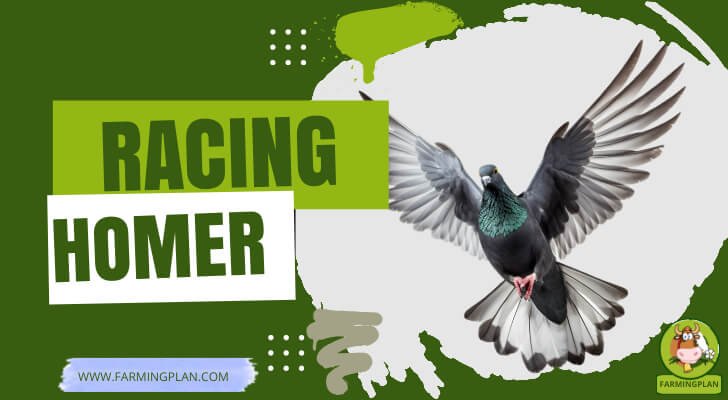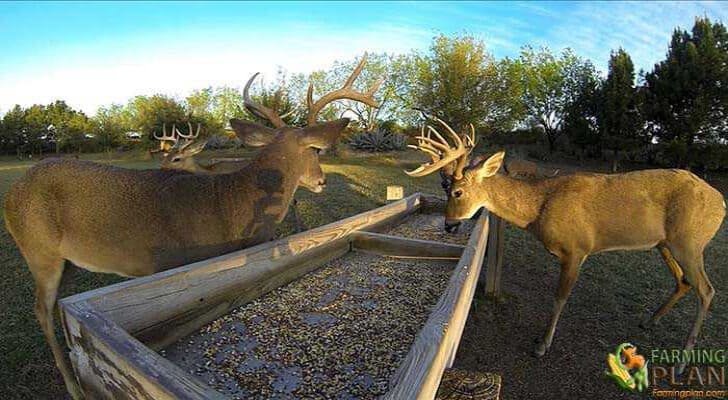I was intrigued and overwhelmed when I first heard about Racing Homer pigeon. I had no idea what I was getting into. Little did I know that this journey would teach me about the world of pigeon racing and give me an incredible sense of achievement. Every step was filled with challenges and excitement, from training my first bird to learning the best racing strategies. But nothing compares to the thrill of seeing your pigeon soar into the sky, knowing that all your hard work is paying off. Here’s how I mastered the art of Racing Homer pigeon.

What is Racing Homer?
The Racing Homer is a breed of pigeon specially bred for competitive racing. Known for their speed, stamina, and incredible homing ability, these pigeons are trained to return home quickly from long distances.
The Origin of Racing Homer
Racing Homers originated in Europe during the 19th century. Pigeons were used for communication, and those with excellent homing abilities were selectively bred, creating the Racing Homer. Over time, these pigeons were developed for their ability to race long distances and return quickly.
How Racing Homers Are Bred and Trained for Racing
Racing Homers are bred for speed, stamina, and homing instinct. Breeders select pigeons with proven racing abilities to create strong bloodlines. Training starts at a young age with short flights and gradually increases in distance. The pigeons are conditioned to fly long distances, navigate accurately, and return home safely.
Role of Racing Homer Pigeon in Competitive Events
Racing Homers play a central role in pigeon racing. In competitive events, pigeons are released from a designated location, and they aim to return home as fast as possible. The winner is the pigeon that completes the journey the quickest, showcasing the speed and endurance of the Racing Homer.
Read More: Chinese Owl Pigeon
Key Characteristics of Racing Homer Pigeon
Racing Homer pigeon have distinct characteristics that make them ideal for competitive racing. Here are the main traits:
- Size: Racing Homers are medium-sized pigeons. They are neither too large nor too small, which allows them to fly long distances without tiring too quickly.
- Endurance: One of the key attributes of Racing Homers is their exceptional stamina. These pigeons can fly for hours without stopping and cover distances of up to 500 miles in a single race.
- Intelligence: Racing Homers are highly intelligent, which helps them navigate their way home even after being released in unfamiliar locations.
- Speed: Racing Homers are fast flyers. Their speed is an essential factor for winning races.
- Appearance: They typically have a sleek and aerodynamic build, strong wings, and a smooth, steady flight pattern. They come in various colors, including blue, white, and red.
Training Racing Homer Pigeon
Training is a critical part of preparing Racing Homers for competitive events. Training aims to build the pigeons’ stamina, speed, and homing abilities. Here are some essential tips for training your Racing Homer pigeon:
- Start Early: Begin training your pigeons at a young age. The earlier you start, the more likely they will develop intense flying and homing abilities. Young pigeons can begin training around 6-8 weeks old.
- Gradual Distance Increases: Start with short training flights and gradually increase the distance. This helps the pigeons build stamina and become comfortable with longer flights.
- Consistent Training: Like any athlete, pigeons need regular training. Train them consistently, increasing the distance each time.
- Route Familiarization: Train your pigeons on different routes to improve their ability to find their way back home. Over time, they will learn to navigate using landmarks, the sun, and even magnetic fields.
- Training Equipment: Some racers use tracking devices to monitor their pigeons’ performance and ensure they are improving. This helps assess whether the pigeons are ready for a race.
Nutrition and Care for Racing Homers
Proper care and nutrition are essential for maintaining the health and performance of your Racing Homer pigeon. A well-balanced diet supports their stamina, recovery, and overall well-being.
- Diet: Racing Homers require a varied diet that includes grains, seeds, and pellets. The staple food for pigeons is corn, which provides energy. You should also feed them a mix of barley, wheat, and peas. A balanced diet helps build their stamina and energy reserves for long-distance flights.
- Supplements: Consider adding supplements to their diet, such as vitamins, minerals, and electrolytes. These help pigeons recover after long flights and boost their immune system.
- Water: Always ensure that your pigeons can access clean, fresh water. Proper hydration is key to their health and endurance.
- Loft Care: The loft, or pigeon house, should be kept clean and dry to avoid infections. To keep the pigeons healthy, the loft should be regularly cleaned, comfortable nesting areas should be provided, and proper ventilation should be ensured.
Read More: Archangel Pigeon
Homer Racing Strategies
A good strategy can make the difference between winning and losing a race. Here are some techniques you can use to improve your chances of success:
- Pigeon Selection: Choose pigeons that have a strong genetic background. Look for pigeons that have shown exemplary performance in training and have natural navigation instincts have natural navigation instincts.
- Timing: Know when to race. Weather conditions, such as wind speed and direction, significantly affect your pigeons’ performance. It’s essential to time your race when the conditions are favorable.
- Route Planning: Plan the route carefully if you’re racing over a long distance. Some racers release pigeons from specific locations where the pigeons have a better chance of navigating back home quickly.
- Race Day Preparation: Make sure your pigeons are in top shape on race day. Do a final check on their health, ensuring they’ve had proper rest, are hydrated, and are well-fed.
Common Mistakes in Homer Racing
Even experienced racers can make mistakes that can impact their pigeons’ performance. Here are some common errors to avoid:
- Undertraining: Failure to consistently train pigeons or starting training too late can result in poor race performance. It’s important to train regularly and gradually increase the distance.
- Improper Nutrition: A poorly balanced diet can lead to weak, underperforming pigeons. Ensure your pigeons get the proper nutrients, vitamins, and hydration.
- Overtraining: While training is essential, overtraining can cause exhaustion and health problems for your pigeons. Always allow them enough time to rest and recover.
- Ignoring Health: If a pigeon shows signs of illness or weakness, do not race it. Racing sick pigeons can reduce their chances of winning and hurt their overall health.
Speed Training for Homer Racing Pigeons
Speed is a critical factor in racing success. Here are some tips on how to increase the speed of your Racing Homers:
- Interval Training: Like human athletes, pigeons can benefit from interval training. Start by having them fly short bursts at top speed, followed by recovery periods. Over time, they will become faster and more efficient.
- Speed Drills: Train your pigeons with short flights at a high speed. Gradually increase the length of these high-speed intervals to improve their endurance and speed.
- Focus on Strength: Strong muscles contribute to faster flight. Ensure your pigeons get enough exercise and proper nutrition to build muscle mass and strength.
Read More: Pouter Pigeon
Advanced Tips and Ideas for Better Performance
For those who want to take their racing to the next level, here are a few advanced tips:
- Breeding for Performance: Select breeding pairs based on their performance and genetic traits. Some pigeons are naturally better racers, and you can improve your stock by carefully selecting breeders.
- Technology Integration: Monitor and analyze your pigeons’ performance using tracking devices. This can help you identify areas needing improvement, such as stamina or speed.
- Race Day Analysis: After each race, analyze the results. Look at factors such as the time it took for each pigeon to return and any issues that may have impacted their performance. Use this data to improve future training.
FAQs
What makes Racing Homer pigeon different from regular pigeons?
Racing Homer pigeon are specially bred for their speed, endurance, and homing ability, making them ideal for competitive racing.
How long does it take to train a Racing Homer pigeon?
Preparing a Racing Homer for competitive races usually takes several months of consistent training.
Can Racing Homers fly long distances?
They can fly up to 500 miles, depending on their training and stamina.
What is the best diet for Racing Homer pigeon?
A balanced diet of grains, seeds, and occasional supplements is essential for maintaining a Racing Homer’s health and performance.
How do I improve my Racing Homer’s speed?
Speed training, including interval drills and strength exercises, can significantly enhance a Racing Homer’s flying speed.
Conclusion
Training Racing Homer pigeon is a rewarding experience that requires dedication, consistency, and the proper techniques. Every detail is vital in achieving success, from selecting the right pigeons and providing adequate nutrition to using advanced strategies and training methods. Understanding and enhancing their natural abilities through appropriate care and training will ensure your pigeons are ready for any race. By following these tips, you can improve your pigeons’ performance and experience the joy of watching them soar to victory in competitive pigeon racing. Embrace the journey, and success will follow.


